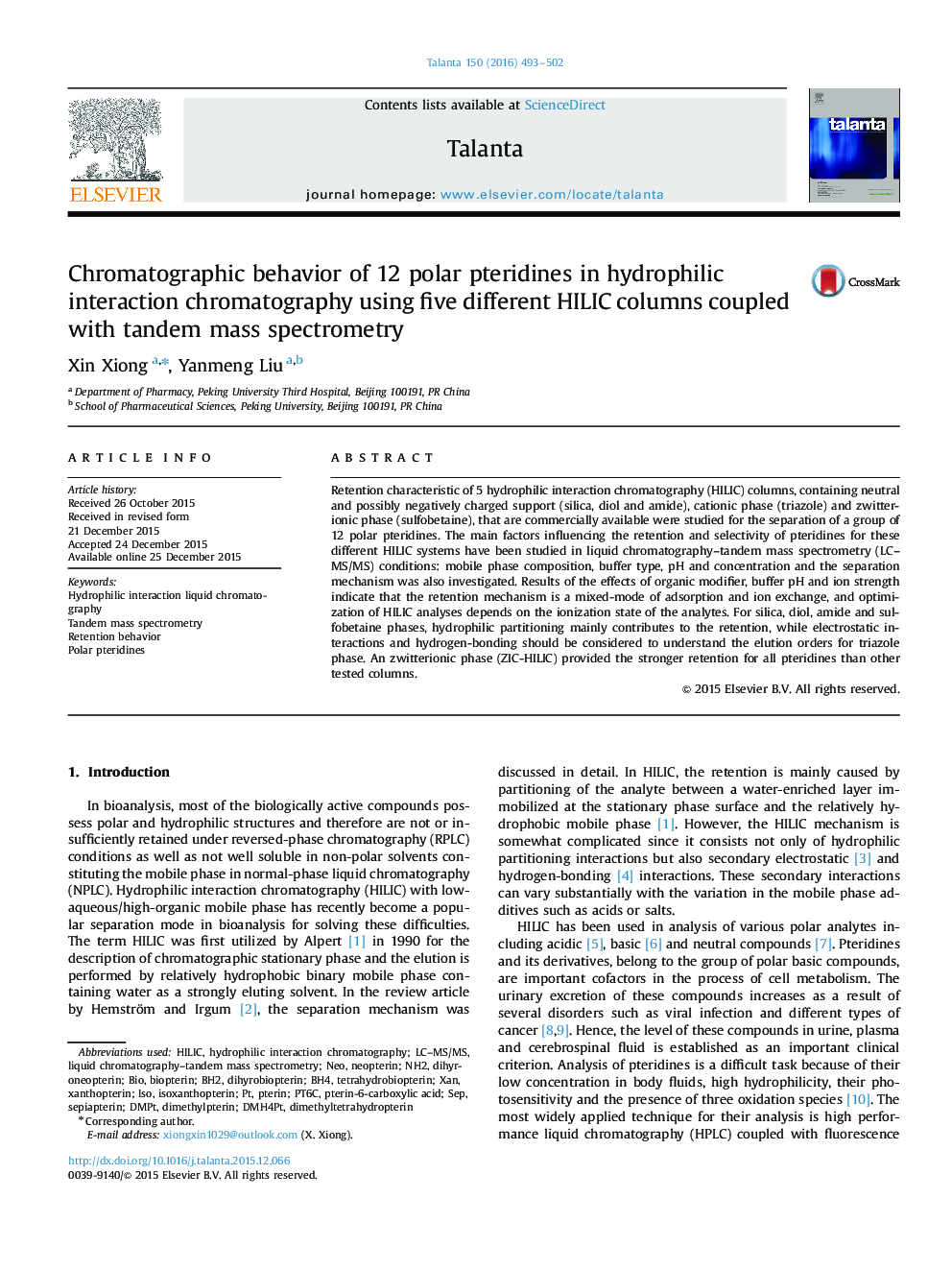| کد مقاله | کد نشریه | سال انتشار | مقاله انگلیسی | نسخه تمام متن |
|---|---|---|---|---|
| 1242198 | 1495785 | 2016 | 10 صفحه PDF | دانلود رایگان |

• Pteridines are potential biomarkers for several diseases such as cancer.
• Analysis of pteridines is a difficult task (high polar basic compounds).
• HILIC mode is a good choice for the separation of pteridines.
• Improved knowledge of the interactions allows us to obtain the best separation.
Retention characteristic of 5 hydrophilic interaction chromatography (HILIC) columns, containing neutral and possibly negatively charged support (silica, diol and amide), cationic phase (triazole) and zwitterionic phase (sulfobetaine), that are commercially available were studied for the separation of a group of 12 polar pteridines. The main factors influencing the retention and selectivity of pteridines for these different HILIC systems have been studied in liquid chromatography–tandem mass spectrometry (LC–MS/MS) conditions: mobile phase composition, buffer type, pH and concentration and the separation mechanism was also investigated. Results of the effects of organic modifier, buffer pH and ion strength indicate that the retention mechanism is a mixed-mode of adsorption and ion exchange, and optimization of HILIC analyses depends on the ionization state of the analytes. For silica, diol, amide and sulfobetaine phases, hydrophilic partitioning mainly contributes to the retention, while electrostatic interactions and hydrogen-bonding should be considered to understand the elution orders for triazole phase. An zwitterionic phase (ZIC-HILIC) provided the stronger retention for all pteridines than other tested columns.
Figure optionsDownload as PowerPoint slide
Journal: Talanta - Volume 150, 1 April 2016, Pages 493–502